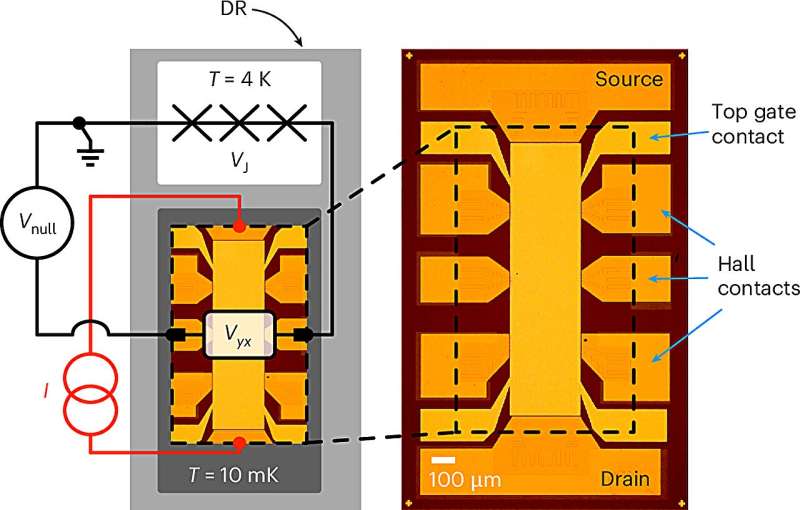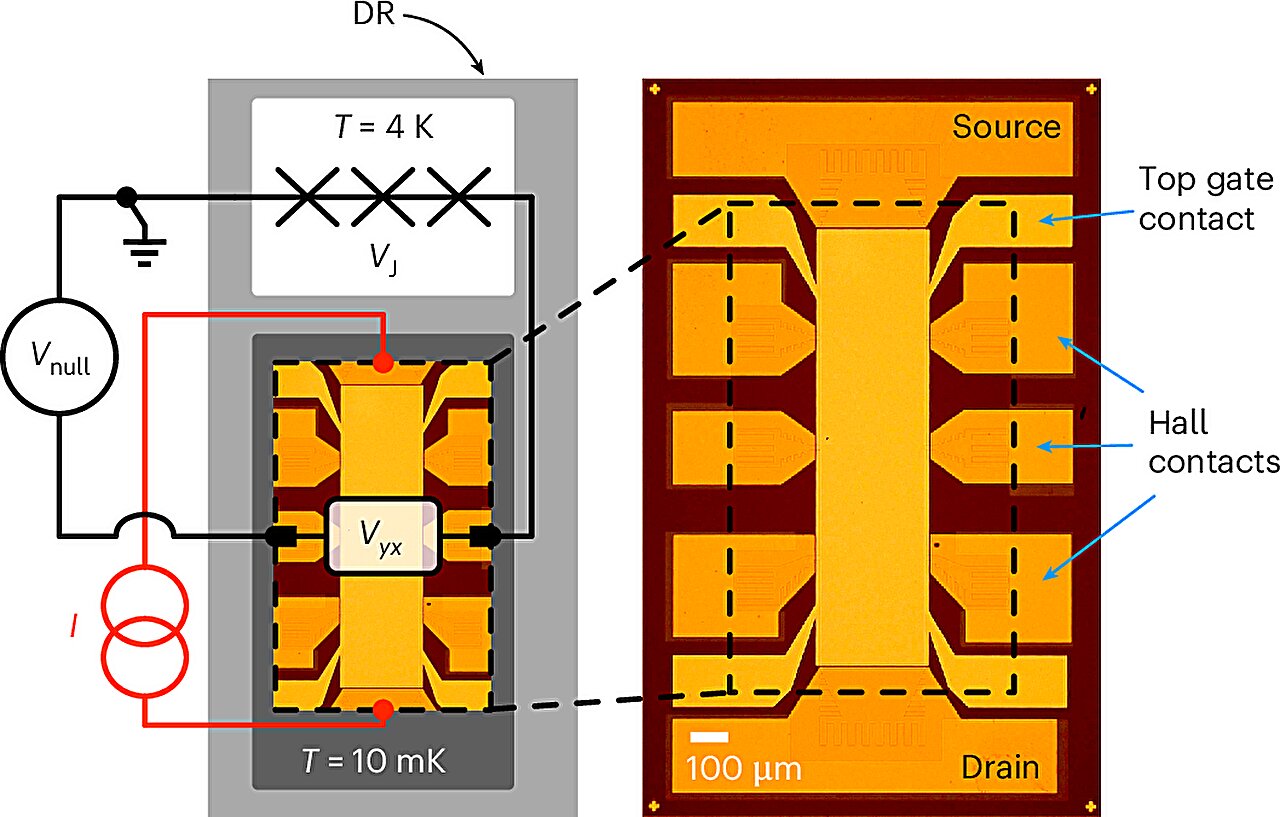
Illustration of a current measurement with the unified system. Credit: Nature Electronics (2025). DOI: 10.1038/s41928-025-01421-2
A team of scientists has revealed how a single quantum device can accurately measure the three fundamental units of electricity—the ampere (unit of electrical current), the volt (unit of electrical potential) and the ohm (unit of electrical resistance). This is a significant breakthrough because until now, no single instrument could measure all three primary electrical units in one practical system. It means that making electrical measurements could be more precise and reduce the potential for human error.
Jason Underwood at the National Institute of Standards and Technology (NIST) in Maryland and his colleagues have shown how the device is possible by integrating two key quantum systems into a single cryostat. Namely, a special type of resistor called a quantum anomalous Hall resistor (QAHR) and a programmable Josephson voltage standard (PJVS). The cryostat provides the right low-temperature environment for both of them to operate effectively.
Overcoming challenges
Combining the two quantum systems into a single device was challenging because they rely on fragile quantum phenomena that can only be observed at low temperatures. Additionally, one of the devices requires a strong magnetic field to work, which interferes with the operation of the other. However, the scientists were able to overcome these difficulties by using a new material that can perform its quantum functions without needing a magnetic field. Therefore, the two quantum systems were successfully integrated into a single device.
The new integrated quantum device operates on the principles of quantum mechanics, which are far more precise than classical methods. Using this new technology, the researchers measured voltages from 0.24 millivolts to 6.5 millivolts with very little error. They also made extremely precise measurements of resistance and electrical current.
Future applications
Ultimately, the research, published in the journal Nature Electronics, simplifies the process of making highly accurate electrical measurements and could lead to new ways of defining electrical standards. This technology could be used in top-tier laboratories and national measurement institutions to perform extremely precise electrical measurements. That could mean more accurate and reliable data in a variety of fields, including manufacturing electronic devices, scientific research and medical diagnostics.
The scientists who conducted the research also see a wider impact of such a device, such as encouraging new developments in materials. As they wrote in their paper, “Our hope is that this initial effort towards a multifunction quantum instrument will spur innovation in topological material systems and in cryostat design and engineering.”
A News & Views article about the research was also published in Nature Electronics.
Written for you by our author Paul Arnold, edited by Gaby Clark, and fact-checked and reviewed by Robert Egan—this article is the result of careful human work. We rely on readers like you to keep independent science journalism alive.
If this reporting matters to you,
please consider a donation (especially monthly).
You’ll get an ad-free account as a thank-you.
More information:
Linsey K. Rodenbach et al, A unified realization of electrical quantities from the quantum International System of Units, Nature Electronics (2025). DOI: 10.1038/s41928-025-01421-2
Stephen P. Giblin, Simplifying primary electrical standards, Nature Electronics (2025). DOI: 10.1038/s41928-025-01423-0
© 2025 Science X Network
Citation:
Single quantum device that measures amperes, volts and ohms could revolutionize how we measure electricity (2025, August 20)
retrieved 20 August 2025
from https://phys.org/news/2025-08-quantum-device-amperes-volts-ohms.html
This document is subject to copyright. Apart from any fair dealing for the purpose of private study or research, no
part may be reproduced without the written permission. The content is provided for information purposes only.
